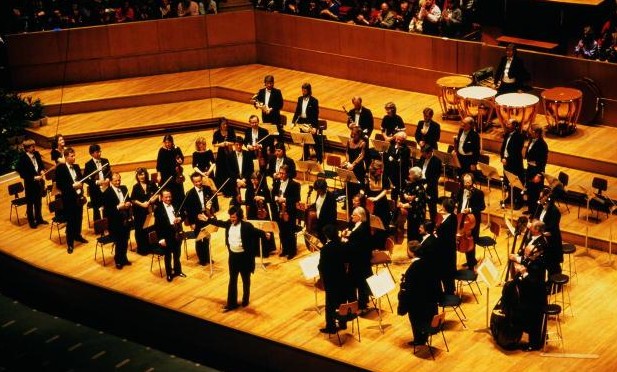Come si crea una grande forza vendite? Assumendo venditori talentuosi di natura? Oppure si può costruire e far crescere?

Certamente ci sono caratteristiche naturali che predispongono alla vendita – essere naturalmente empatici e “bravi con le persone” è un fattore di vantaggio. Le caratteristiche che li rendono naturalmente predisposti sono sicuramente sviluppabili, ma è anche vero che è più semplice acquisire e curare un purosangue, piuttosto che cercare di far vincere il Palio ad un ronzino!
Eppure, il talento naturale è solo uno degli elementi che rendono una forza vendite eccellente. Vendere è una scienza, non è un’arte. Ecco i 5 passaggi fondamentali per eccellere nella vendita, come sforzo di gruppo anziché come fantasia dell’individuo.
Strategia – senza una direzione centralizzata e di ampio respiro, anche il miglior “fantasista” della vendita (anzi, spesso soprattutto lui!) rischia di sprecare il proprio talento, oppure gravitare rapidamente verso i contratti ed i clienti più semplici, cadendo nella classica “regola del 20-80”.
Organizzazione – Una grande forza vendite deve essere organizzata, come una squadra, come un’orchestra, proprio per sfruttare i talenti di ognuno. Se leggiamo questo punto in una chiave di Stili Sociali, uno stile “Quadri” analitico sarà anche diligente ed approfondito nella preparazione della visita, il che potrà permettere al fantasista “Fiori” di usare la sua abilità di persuasione al massimo effetto. Per più informazioni sugli Stili Sociali, scopri di più nell’area dedicata di Performance Visions
Talento – certo, è fondamentale. Ma ogni persona può avere talenti unici, che solo all’interno di un’organizzazione ben orchestrata possono realmente emergere.
Esecuzione – strategia, preparazione, marketing, devono scaricare a terra in un’esecuzione diligente ed efficace, seguendo piani d’azione chiari e ripetibili, secondo una logica di gestione del progetto di vendita.
Supporto – sia prima che dopo l’atto di vendita in sé. Una grande forza vendite è la prima linea dell’organizzazione ed è supportata da tutte le funzioni che stanno alle spalle: il marketing con materiali realmente efficaci, le Operations con processi aziendali che ne sveltiscano il lavoro, il Customer Service per mantenere il rapporto nel tempo anche a fronte di problemi, la logistica per mantenere le promesse di consegna fatte al cliente…
Miglioramento ed adattamento – una grande organizzazione di vendita non è mai statica, ma si evolve in continuazione per rimanere sempre un passo avanti alla concorrenza, secondo la logica per cui (parafrasando Senge) l’unico vantaggio competitivo per un’azienda, oggi, consiste nell’apprendere più rapidamente della concorrenza.
Di seguito l’articolo originale in inglese
Most sales leaders would agree that salespeople who possess certain innate personality characteristics, such as curiosity, empathy, and drive, are more likely to be successful. (Consider the saying: “Although you can teach a turkey to climb a tree, it’s much easier to hire a squirrel.”) But there’s a big difference between individual success in sales and success across an entire sales force. Whatever the born/made balance for a single salesperson, great sales forces are made.
Even if you believe that most great salespeople are born, a first step in “making” a great sales force is finding, hiring, and retaining the natural sellers. But talent on its own is not enough. Even the best natural sellers need a strategy around target products and markets and a defined role, along with systems and processes to enable their success and align their efforts around common goals of customer and company success. Great sales forces are made by bringing excellence to all of the following:
Strategy. The first element in making a great sales force is defining a sales strategy, which specifies who salespeople should sell to, what products/services they should offer, and what sales process they should use (i.e. what series of steps with customers, including the specific sales activities, milestones, roles, and enablers for each step). Without a company-defined sales strategy and process, good salespeople will develop their own local strategies for which customers and products/services to focus on, and their own processes for selling. Without benefit of a broader perspective, it is questionable whether these independently developed local strategies and processes will combine to align aggregate sales effort with overall strategic priorities. Without a company-defined sales strategy, even the best salespeople may gravitate toward easy work (e.g. calling on friends and family) over hard work (e.g. selling complex products against competition).
Organization. The second constituent in making a great sales force is providing clarity about sales force roles and responsibilities in an effective and efficient organizational structure. Without such clarity, there may be confusion about which channel (e.g., direct sales, selling partners, inside sales, e-channels) or sales role (e.g. generalist, specialist, key account manager) is best suited for different customers or sales activities. Salespeople may not know who to contact in other company departments to get customer questions answered. An inefficient and ineffective structure and deployment of the sales team may compromise customer coverage, leading to lost opportunities and wasted sales effort. At the same time, the size of the sales force may be inadequate, leading to insufficient customer coverage (if there are too few salespeople) or excessive cost (if there are too many).
Talent. The third component in making a great sales force focuses on talent – having and executing defined approaches for acquiring talent (e.g. recruiting profiles, target candidate pools, evaluation processes, and programs for attracting top job candidates), developing sales force competencies (e.g. training and coaching programs focused on markets, products, customers, and sales processes), and retaining good salespeople and managers at every career stage (e.g. programs for energizing people and reinforcing a sales culture that breeds success). Without sustained focus on acquiring talent, the best salespeople are unlikely to join the sales force in the first place. And without continual attention to developing and retaining people, those who do join may become disengaged due to a lack of opportunities, success, learning, and growth, or due to a dysfunctional culture.
Execution. The best strategy, structure and talent can fail in execution. For effective execution, great sales forces are made by taking steps to ensure sales effort is of high quantity and quality, and allocated to the right products, markets, and selling tasks. This requires using tools such as sales compensation, recognition programs, and goal setting to motivate salespeople to perform the right sales activities. It requires directing and managing salespeople using the right metrics, operating cadence, and performance management process. And it requires a strong first-line sales management team. Without sustained focus on motivating and directing salespeople, sales roles may get polluted by urgent sales activities (e.g. responding to service requests) that take time away from more important tasks (e.g. approaching difficult but important prospects). Sales force performance can veer off course quickly.
Support. For sustained success, great sales forces are made by having strong sales operations capability and a network of internal and external resources that possess expertise in areas such as sales planning, forecasting, compensation administration, and territory design. There are processes for accomplishing this work efficiently and effectively, along with the right data and technology for enabling processes and creating insights for enhancing performance. Without a good support structure, a lack of discipline in sales operations can lead to inefficiency and lost opportunity.
Improvement and Adaptation. Creating excellence in all of these areas is no easy task. Bringing quality and alignment to the many moving pieces that combine to create a successful sales force system can appear daunting. As we suggested in a 2012 HBR piece, there are no silver bullets. The best sales forces are made by having systematic processes for prioritizing the areas needing upgrades and making continuous improvements, and by transforming themselves if needed to align with new strategies or market shifts.

Scrivi un commento
You must be logged in to post a comment.